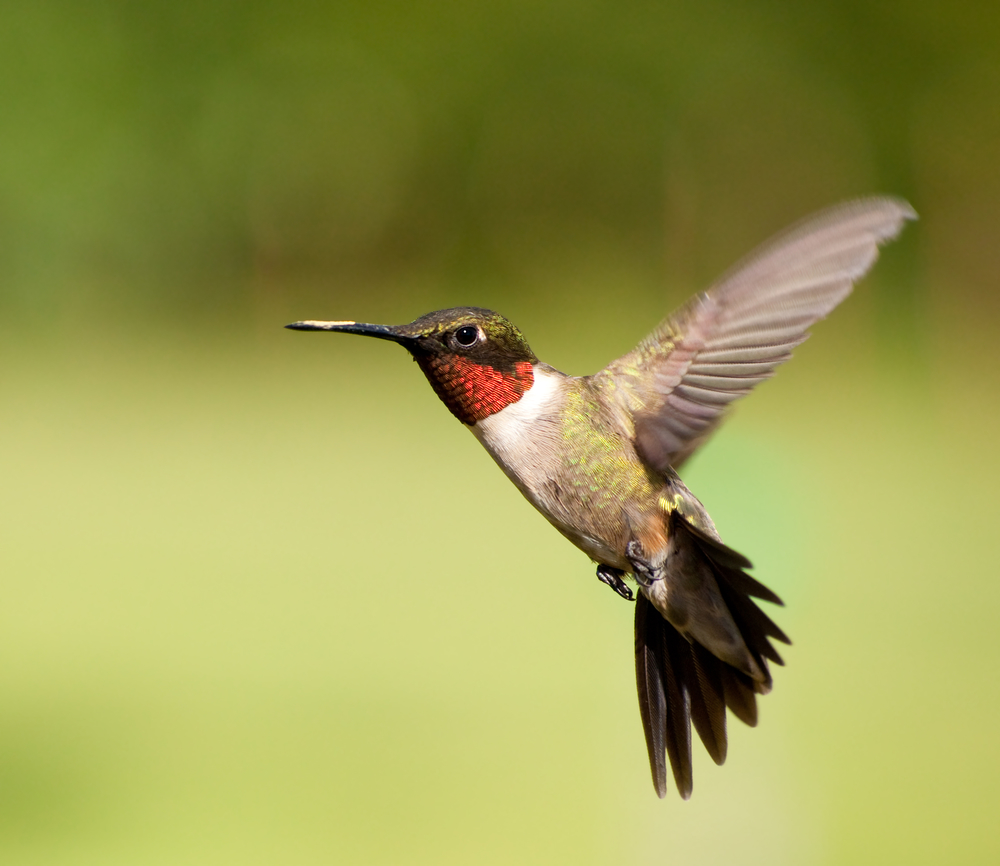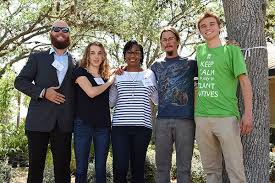Hummingbirds are some of the most desired and sought out backyard birds. These acrobatic flyers can be very entertaining to watch as hummingbirds have many unique qualities and behaviors including hovering and flying upside down.
Hummingbirds require nearly half their weight in food every day and with the smallest hummingbird only a quarter ounce, these busy creatures still need a large amount of food to thrive. Nimble, fast and brightly colored, they delight the eye with their high-energy antics. Hummingbirds need nectar from flowers and do not eat berries or seeds.
The hummingbird is only seen in migration during spring and fall months in Florida; however, you are likely only going to see Ruby Throated Hummingbird in our area. Many of these birds travel to and from their winter homes in Mexico and Central America. North America offers less competition for food, moving about in summer in their breeding grounds. These amazing birds can fly over 1243 miles without stopping.
Scientists believe that hummingbirds return year after year to the same food sources where they were born and will stop along the way at the same food sources in their migration. This means that they may return to the same backyard every year. In colder states, fall migration sends these birds back to Central America or Mexico, as the insects, their main source of food, dwindle with the cooler weather.
Because of the long journey, the hummingbird need the nectar of blooming flowers, as they refuel for the trip ahead. Considered “snowbirds” these migratory hummingbirds return yearly to Alabama and Florida on their trip to warm wintering locations. They have been tracked, so experts know that the same birds are returning. With this in mind, give them a reason to return to your yard.
Lots of tubular red flowers, their favorite food, attract the birds. Because they need an abundance of food, good plant choices providing natural food sources is important. Feeders are discouraged in our area since Hummingbirds are migrating here and before the bird finds the feeder, the sugar water in feeders is apt to spoil poisoning the bird. Provide the right plants for excellent results!
Many people comment on not seeing Hummingbirds in Florida, but because of their fleeting presence in the search for food, one must be diligent in observation and use of the distinct plants that attract them and their unique flight patterns. Use the historical native plants that Hummingbirds that include red, orange and pink flowers attract these little visitors. Providing nourishment for visiting hummingbirds is something that any Floridian can do.
Florida Native Plants Used to Attract Hummingbirds
Here are some of the native plants that can be used:
- Firebush, Hamelia patens
- Coral honeysuckle, Lonicera sempervirens
- Coralbean, Erythrina herbacea
- Tropical Sage, Salvia coccinea
- Crossvine, Bignonia capreolata
- Cardinalflower, Lobelia cardinalis
- Necklace Pod, Sophora tomentosa
Coral honeysuckle is a vine that is carefree. As an evergreen vine or it can be
planted as a woody, flowering groundcover. Plant it next to a fence or trellis as a well-behaved
vine. An occasional pruning keeps it within limits. You might want to plant
this, along with other hummingbird plants, close to a window so you can observe
the comings and goings of your little friends.
The Firebush blooms prolifically and is a fast grower. Once it is established,
seasonal rains are enough to keep it thriving. Dying back after a hard freeze,
the firebush will grow back with sprouts in the early spring. Another benefit, songbirds,
butterflies and bees are attracted to it as well as hummingbirds. Be sure that
the variety of this plant that you buy is the native type.
Some wildflowers that attract hummingbirds include Prairie phlox, Phlox pilosa,
and Tropical sage, Salvia coccinea. In addition to these, other
wildflowers do the same job. There are many more species not listed here that
can be used and you can check the lists with the Florida Native Plant Society or
the Institute of Food and Agricultural Sciences at the University of Florida for
more information of plant species that can be used to attract hummingbirds.
Some non-invasive non-native plants can be used as attractors too. These may include Shrimp Plant, Justicia brandegeeana, and Firespike, Odontonema cuspidatum.
Whether you plant vines, shrubs or trees, planting their favorite native plants will bring these little birds to your yard; you, with some planting know-how, get to see your visitors, while providing them with the nourishment these little hummingbirds need.


